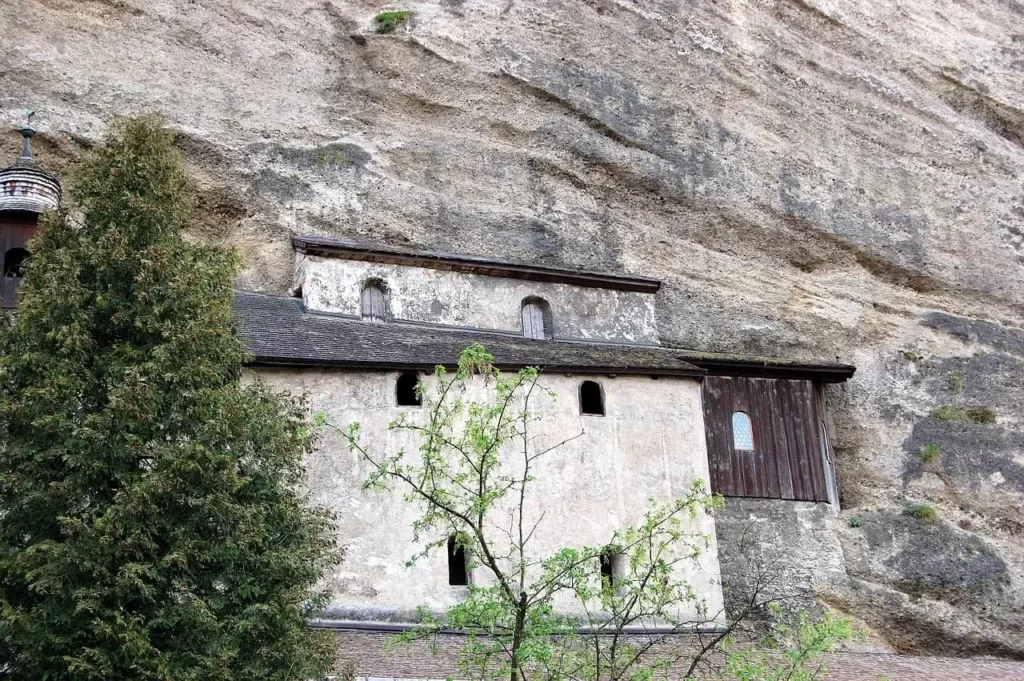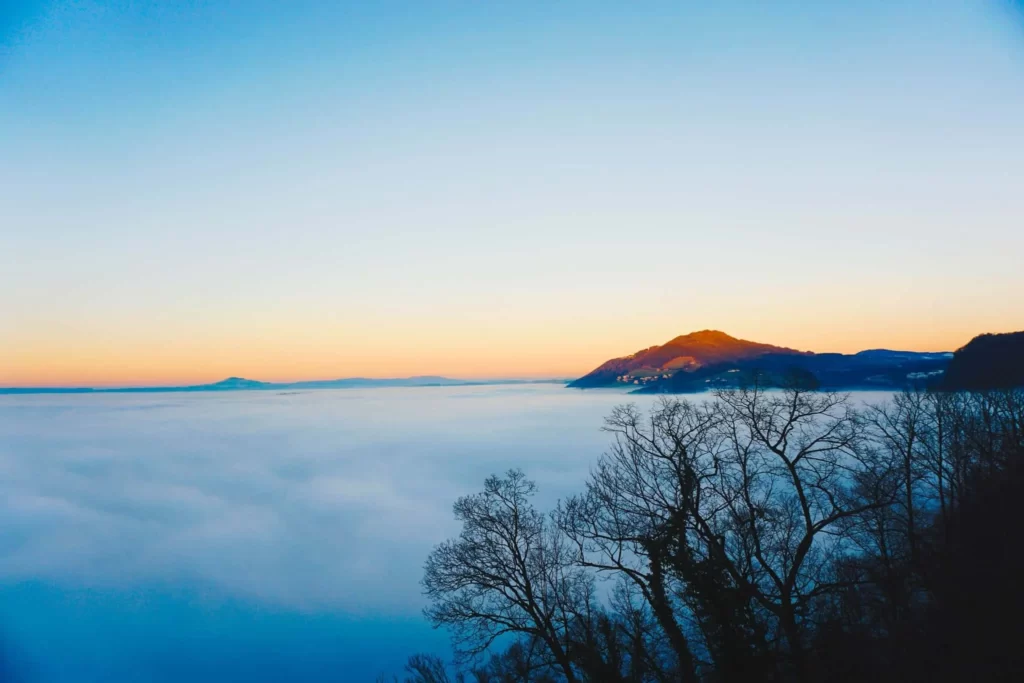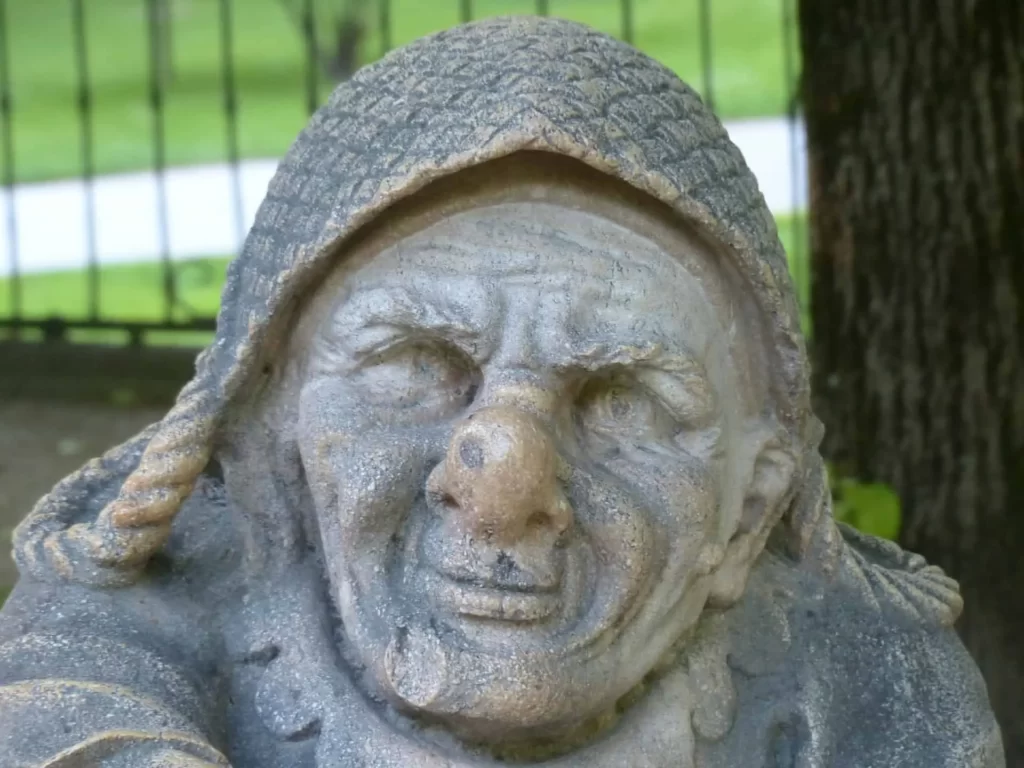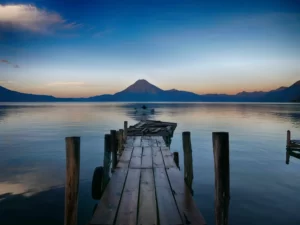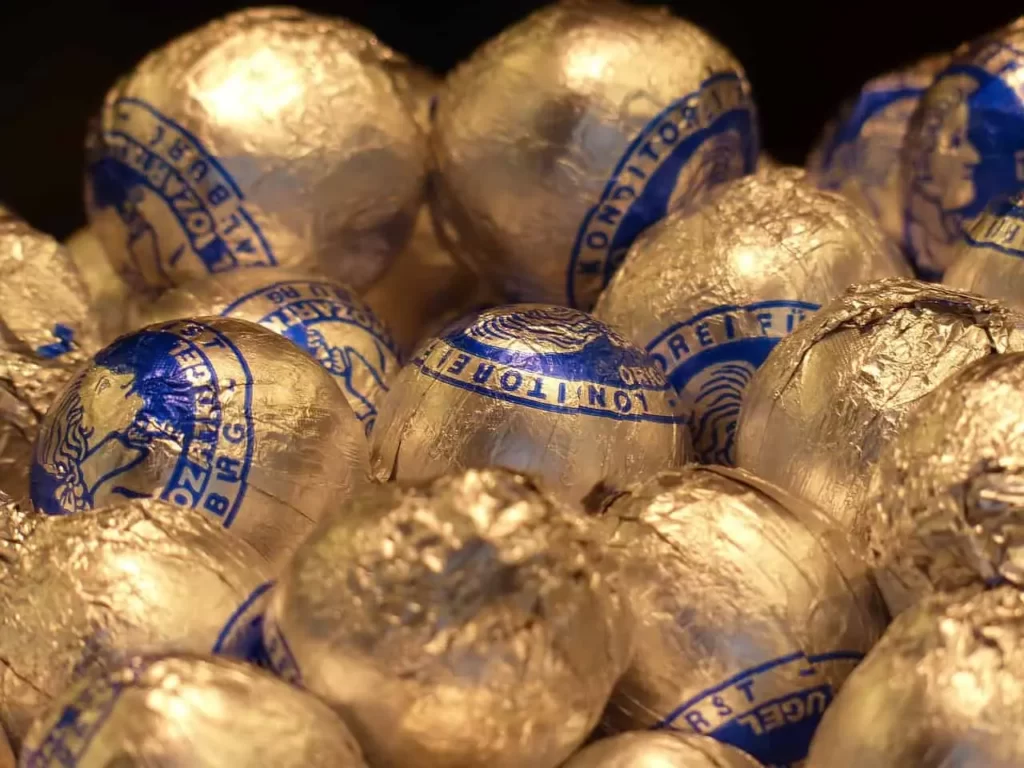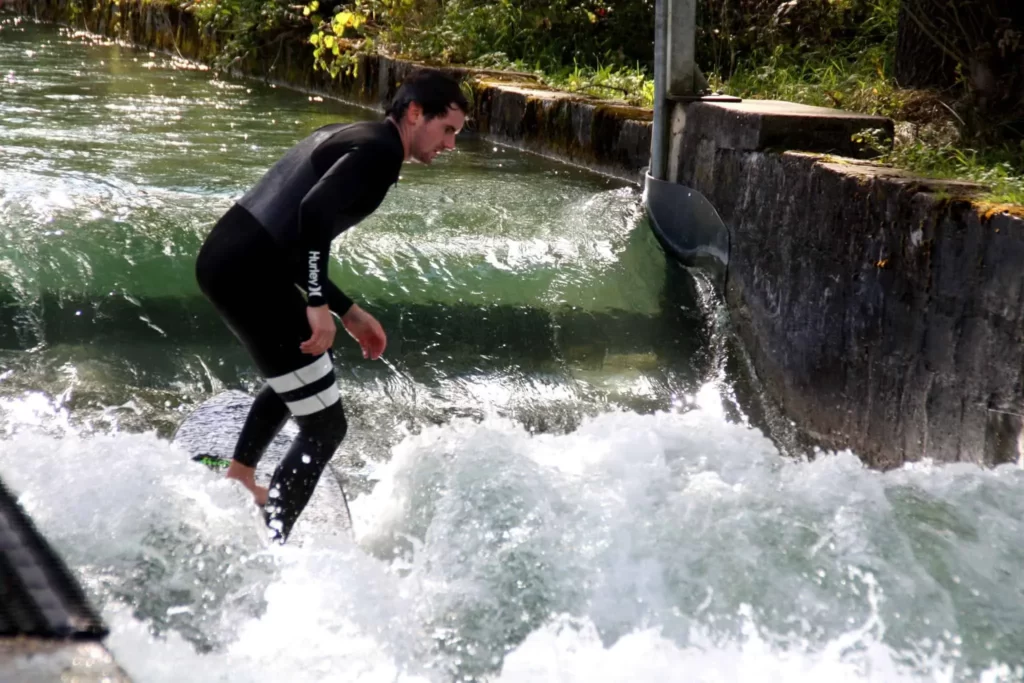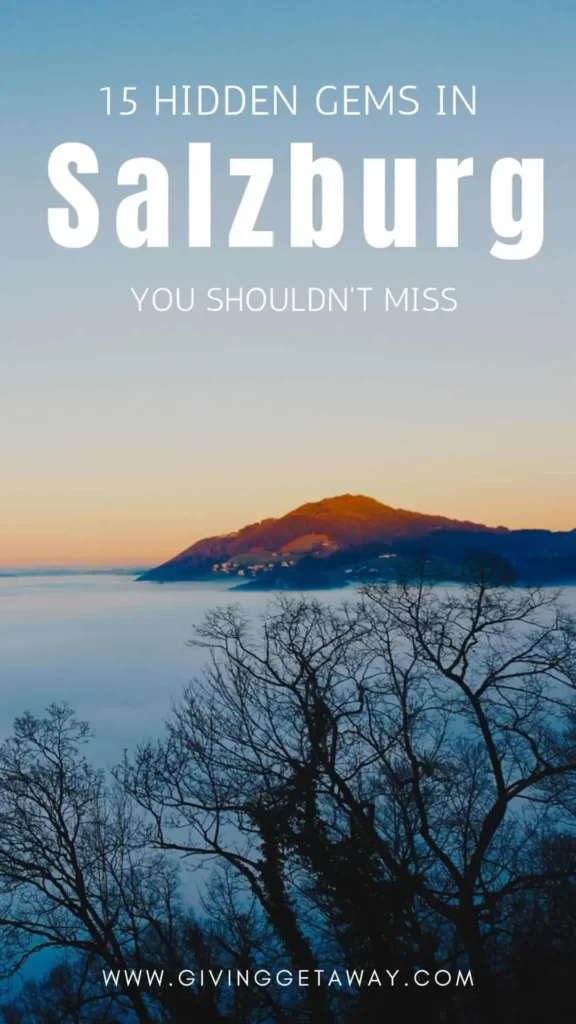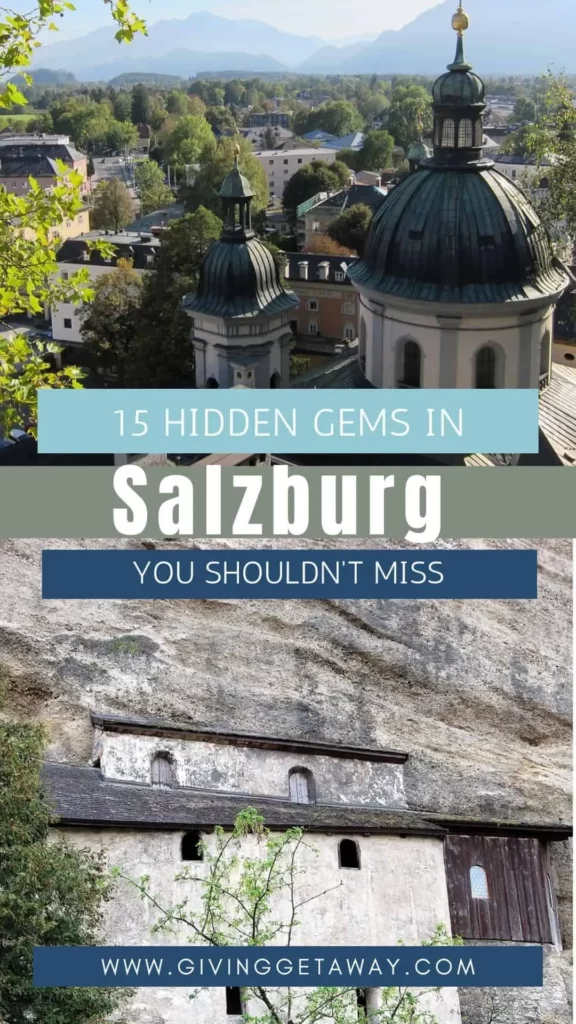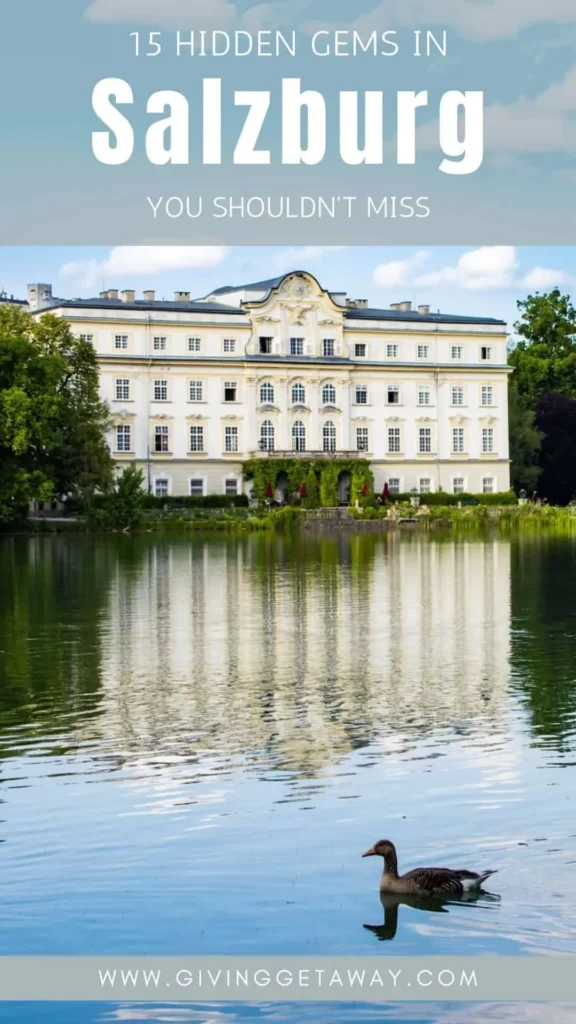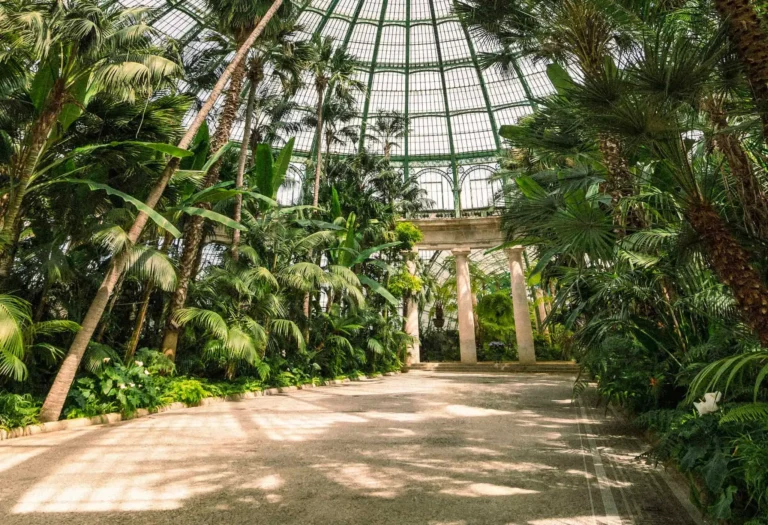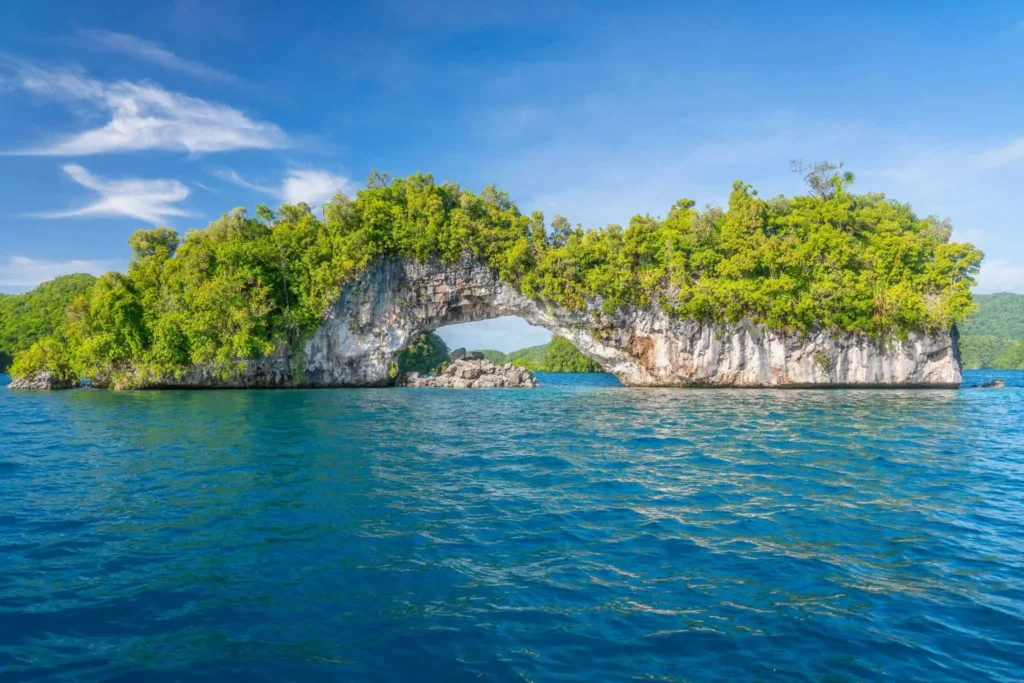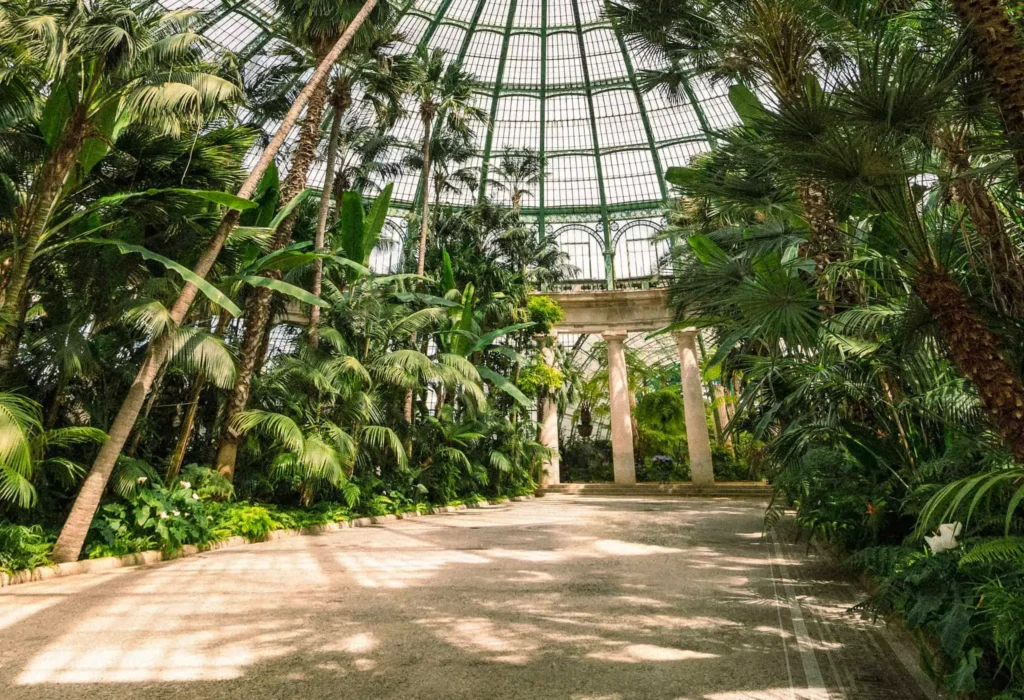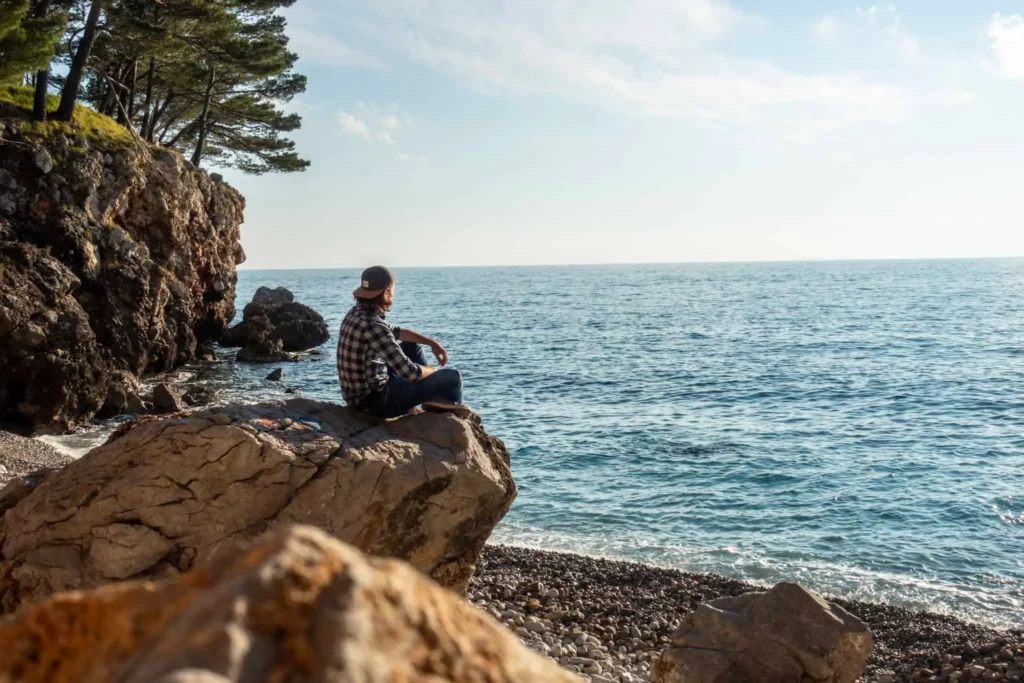| This post may contain affiliate links. Whenever you book or buy something through one of these, Giving Getaway gets a small commission, of which 100% will be donated to charity, without any extra cost to you! |
Salzburg, a city renowned for its musical heritage and breathtaking landscapes, is a treasure trove of hidden gems that are just waiting to be explored. While popular attractions like Mozart’s birthplace and the Hohensalzburg Fortress are undoubtedly worth a visit, several lesser-known gems in Salzburg deserve your attention.
From unique gardens and secret courtyards to off-the-beaten-path museums and hidden viewpoints, these hidden gems offer a unique perspective on Salzburg’s rich history and culture. To discover these hidden treasures, I’ve tapped into the insights of locals and fellow travelers who have shared their favorite places through Giving Getaway’s Hidden Gems Collector.
Before I dive into Salzburg’s hidden gems, just a heads up: as you read this post (and explore the website), you will see some ads, affiliate links, and search widgets. Feel free to click on them if they can help you plan your next trip. It won’t cost you a thing extra, but I will earn a commission of which I’ll be giving away 50% of that commission to charity. Thank you!
Now, let’s embark on a journey through the captivating streets of Salzburg and uncover the best hidden gems this city has to offer!
1) Salzburg Catacombs
The Salzburg Catacombs have been a must-visit attraction for centuries, offering a unique glimpse into the city’s rich history and cultural heritage. Carved into a mountainside during the 12th century, these catacombs hold great significance as a mystical site and were used for Christian hermitages. Located within St. Peter’s Abbey, which is the oldest church and cemetery in Salzburg, the catacombs are well-maintained and contain preserved remains of altars, relics, tombs, inscriptions, and faded murals from antiquity.
One of the notable features of the Salzburg Catacombs is that they are the final resting place of renowned composer Michael Haydn and Nannerl Mozart, the sister of the famous composer Wolfgang Amadeus Mozart. This adds to the cultural significance of the catacombs, as they provide a connection to the city’s musical heritage.
In addition to their historical and cultural importance, the catacombs were featured in the iconic film ‘The Sound of Music’ and played a role in the Trapp family’s escape from the National Socialists.
Open to the public, the catacombs consist of two levels, namely the Gertrauden Chapel and the Maximus Chapel. You can explore these chambers and admire the preserved artifacts and architecture. The catacombs also offer a breathtaking view of the city from their windows and balcony, adding to the overall experience.
2) Museum der Moderne
Continuing our exploration of Salzburg’s hidden gems, let us delve into the Museum der Moderne. Perched high above the rooftops of Salzburg’s old town on the Mönchsberg, this museum offers a truly unique experience for art enthusiasts. Spanning four levels, the Museum der Moderne showcases international art treasures from the 20th and 21st centuries in a stylish and puristic setting.
With a total area of 24,757 square feet (2,300 m²), the museum displays a remarkable collection of modern and contemporary art pieces, as well as works from its collections. Here you can enjoy a series of rotating exhibitions, ensuring that there is always something new and exciting to discover. The museum’s dedication to displaying world-renowned art has attracted visitors from all corners of the globe.
One of the highlights of the Museum der Moderne is its unique architecture. Designed by the Munich architecture team Friedrich Hoff Zwink, the building features glassed-in staircases that offer stunning views of the 19th-century water tower.
To enhance the visitor experience, the museum now offers a multimedia guide through the MuseumStars app. This guide provides a wide range of information and services, including an introduction to art in public space, digital art walks, and site plans to help visitors navigate the museum.
3) Kapuzinerberg
Moving on to another hidden gem in Salzburg, let us now explore Kapuzinerberg, a picturesque mountain known for its outdoor activities and historical landmarks. Standing at 2,100 feet (640 meters) high and located to the right of the River Salzach, Kapuzinerberg offers a multitude of opportunities for outdoor enthusiasts and history buffs alike.
One of the main attractions of Kapuzinerberg is its hiking trails, which allow you to enjoy the natural beauty of the mountain. As you ascend the mountain, you will come across several churches, including the Capuchin Abbey, which adds a spiritual touch to the surroundings. The religious section of the mountain is adorned with chapels marking the Stages of the Cross, providing a serene and reflective atmosphere.
For history enthusiasts, Kapuzinerberg boasts 400-year-old defensive walls and fortifications that offer a glimpse into the region’s past. These structures serve as a reminder of the mountain’s strategic significance in protecting the city of Salzburg.
Kapuzinerberg is also home to two historic taverns, the Franziskischlössl and the Paschinger Schlößl. The former was once a popular excursion destination, while the latter served as the former residence of renowned author Stefan Zweig. These landmarks provide a unique experience and insight into the cultural heritage of the area.
4) Mozart Residence
Located on Makartplatz, the Mozart Residence is a historic house that used to be the home of the Mozart family from 1773 to 1787. The house, known as the ‘Dance Master’s House’, gained its name due to the dancing lessons that were offered there for the nobility. The Mozarts moved into this house because their previous residence had become too small to accommodate their growing family.
Although the Mozart Residence suffered partial destruction during an air raid in World War II, it has since been meticulously reconstructed. Today, it stands as a museum dedicated to the life and works of Wolfgang Amadeus Mozart.
Here you can explore the various rooms that were once inhabited by the Mozart family and admire the original documents and portraits on display. The museum also offers a multi-vision show, rotating exhibitions, concerts, and talks, providing visitors with a comprehensive and immersive experience.
A highlight of the Mozart Residence is the Magic Flute House, located in the courtyard. This house, where Mozart composed his famous opera “The Magic Flute,” was originally in Vienna but was moved to Salzburg and underwent extensive renovations.
5) Zwergelgarten
The Zwergelgarten, nestled in the Small Bastion Garden in Salzburg, showcases a collection of 17 meticulously restored marble dwarf sculptures dating back to the 17th century. Originally auctioned off, these dwarf sculptures have made their way back to their original home in Salzburg, where they have been lovingly restored and rearranged in new groups.
Each dwarf in the Zwergelgarten has its unique role and symbolism. Some of them represent gardeners, while others depict ball players. These dwarf sculptures were originally derived from copper engravings by Jacques Callot, adding to their historical and artistic value.
It is worth noting that the Dwarf Garden was originally populated by 28 dwarfs, but now only 17 remain. However, there is a possibility of reuniting all the dwarf sculptures in the future.
The Small Bastion Garden itself provides a serene and picturesque setting for the Zwergelgarten, making it a delightful spot to explore and appreciate these hidden gems of Salzburg’s history.
6) Welt der Gifte
The Welt der Gifte (translated as ‘world of poisons’) is Austria’s smallest and most toxic zoo. Located in Salzburg, this unique exhibit is dedicated to the fascinating realm of venomous animals and the intriguing world of poison.
Welt der Gifte was brought to life by Doctor Nils Kley and opened its doors in 2020. It offers the opportunity to delve into a mesmerizing collection of organic and inorganic toxins. From poisonous plants and mushrooms to microorganisms and poisonous elements, the exhibit showcases a wide range of deadly substances.
To experience this extraordinary zoo, you must book a guided tour. Once inside, you can observe bacteria under microscopes, learn about unexpected means of intoxication, and explore peculiar fashion trends associated with poison. Additionally, you can marvel at the real ingredients used in Harry Potter’s potions classes.
The highlight of the exhibit is undoubtedly the collection of venomous animals. With around 50 snakes, lizards, scorpions, spiders, and toads that produce deadly venom, you can witness these creatures up close and learn about their unique adaptations and the dangers they pose.
7) Leopoldskron Palace
One notable attraction in Salzburg, Austria that should not be overlooked is Leopoldskron Palace, a historic residence steeped in cultural significance. Located near the Salzburg historical district, the palace was built in 1736 as the residence of the Salzburg prince-archbishop. However, its importance extends far beyond its architectural beauty.
In 1918, Max Reinhardt, a famous theater director, purchased the palace and embarked on a 20-year restoration project. Since then, Schloss Leopoldskron has served as a meeting place for the artistic and cultural scene and was even the founding location of the renowned Salzburg Festival.
One of the palace’s claims to fame is its appearance in the beloved movie ‘The Sound of Music’. The lake and gardens of Leopoldskron Palace provided the backdrop for several iconic scenes in the film, forever associating it with the von Trapp family’s story. Despite its popularity, admission to the palace and its grounds is restricted to invited guests and customers. However, for those lucky enough to secure an invitation, Leopoldskron Palace offers luxurious suites and rooms for visitors, providing an exclusive and unforgettable experience.
Additionally, the palace is a popular event location for private and professional occasions. Its elegant rooms, stunning views, and historical charm make it the perfect setting for weddings, conferences, and other special events.
8) Grünmarkt
The Grünmarkt in Salzburg is a vibrant and longstanding market tradition that has been held since 1857. Located in the shadow of the Collegiate Church on Universitätsplatz, this daily market is a popular spot for both tourists and locals alike. Open every day except Sundays and public holidays, the Grünmarkt offers a wide variety of products to satisfy all tastes.
From fresh food to spirits, flowers to souvenir wooden toys, the market stands are filled with an array of items that cater to everyone’s needs. The atmosphere at the Grünmarkt is truly one-of-a-kind, creating a friendly and casual environment that is a magnet for both the young and old.
On Saturdays, the market extends to Wiener-Philharmoniker-Gasse and Max-Reinhardt-Platz, making it even more expansive and exciting. If you’re an early bird, you’re in luck as the market stands open at 6 a.m., allowing you to start your day with a visit to this bustling marketplace.
The Grünmarkt is known for its specialties, which include farm products, bread, rolls, meat and processed foods, fruit, vegetables, and spirits. Whether you’re looking for fresh produce for your meals or unique gifts to bring back home, this market has it all!
9) Stiegl-Brauwelt
The next hidden gem in Salzburg that shouldn’t be missed is the Stiegl-Brauwelt, a testament to the rich tradition and craftsmanship of brewing. Stiegl Brewery, Austria’s biggest and most successful brewery since 1492, is known for its focus on tradition and innovation. One of their most popular beers, Stiegl-Märzen, has been enjoyed since the brewery’s establishment. In fact, Mozart himself was a fan of Stiegl beer!
The Stiegl-Brauwelt offers you a fascinating insight into the world of brewing and beer production. This interactive museum takes you on a journey through the history of Stiegl Brewery and showcases the brewing process from start to finish. You can explore the different ingredients used in brewing, learn about the bottling process, and even try your hand at brewing your own beer.
What sets Stiegl-Brauwelt apart is their commitment to brewing craftsmanship and high quality. They use only the finest regional raw ingredients and employ sustainable practices. They source their pure spring water from a well located below the Untersberg, ensuring that each batch of beer is of the utmost quality.
10) Gherkins
A rather quirky and unique hidden gem that showcases the artistic interpretation of gherkins is the ‘Gurken’ project by Austrian artist Erwin Wurm. Located in Furtwänglerpark, this art piece features five gherkins arranged in a row, scaled up to human size and seemingly growing out of the tarmac. Wurm intends to infuse ordinary objects with individuality, transforming the humble gherkins into works of art.
By elevating pickled gherkins to the realm of art, Wurm invites viewers to contemplate the diversity of forms and the multifaceted individuality of the human body. The installation leaves room for interpretation, oscillating between critical irony and parody. It serves as a reminder that even the simplest and most popular objects can be imbued with deeper meaning and artistic value.
11) St. Erhard’s Church
Located in the historic Nonntal district of Salzburg, St. Erhard’s Church stands as a testament to the city’s rich religious and architectural heritage. Originally built as a hospital chapel, it is now owned by the Nonnberg Convent. The church, constructed in 1689 by architect Giovanni Gaspare Zugalli, showcases an Italian baroque architectural style that is truly captivating.
St. Erhard’s Church boasts distinctive features, including a dome topping the two square towers, visible from a distance. As you approach the entrance, you’ll notice an impressive double staircase that adds to the building’s grandeur. The church’s exterior is also adorned with a wall fountain featuring a lion’s head gargoyle, adding to its overall charm.
The Brenno brothers have left their artistic mark on the church, with intricate designs adorning the walls and ceilings. The highlight of the interior is undoubtedly the painting by Johann Michael Rottmayr, depicting ‘The Baptism of St. Ottilia by St. Erhard’. This masterpiece adds a touch of elegance and spirituality to the space.
The high altar, embellished with stucco marble, is another sight to behold. It features sculptures representing Salzburg’s founding bishops and the four cardinal virtues. These sculptures, along with the altar’s overall magnificence, inspire a sense of reverence and wonder.
12) Haus der Natur
Haus der Natur (translated as ‘house of nature’) in Salzburg offers a captivating exploration of science, nature, and technology. With its extensive exhibitions spread over 75,347 square feet (7,000 m²) of space, you can immerse yourself in a wide range of fascinating subjects in both permant and temporary exhibitions.
The main building houses natural history exhibits and a zoological department, showcasing displays on evolution, man and diversity, the ice age and climate, the universe, prehistoric times, the human body, the animal kingdom, oceans, and more. Additionally, the Science Center provides a hands-on experience with physics and technology, featuring interactive exhibits and experiments.
One of the highlights of the Haus der Natur is the aquarium, where you can marvel at the underwater worlds teeming with colorful marine life. From tropical fish to mesmerizing coral reefs, the aquarium offers a glimpse into the wonders of the ocean. However, it is important to note that the reptile zoo, which houses live snakes and lizards, is temporarily closed until spring 2024.
13) Cafe Konditorei Fürst
Cafe Konditorei Fürst stands out as a culinary treasure in Salzburg, offering a delightful fusion of traditional Austrian pastries and a charming café atmosphere. One of its most famous creations is the Salzburger Mozartkugel, which was first made by the confectioner Paul Fürst in 1890. This delectable treat consists of a marzipan and pistachio core, wrapped in nougat, and dipped in dark chocolate. It quickly became the most popular sweet in the city and is now known as the ‘Original Salzburger Mozartkugel’.
What makes Cafe Konditorei Fürst truly unique is that they still make the original Mozartkugel by hand, using Paul Fürst’s original recipe. The process begins with carefully crafting the marzipan and pistachio core, which is then delicately wrapped in nougat. Finally, each ball is dipped in rich, dark chocolate, resulting in a harmonious blend of flavors.
To preserve its authenticity, the original Mozartkugel is wrapped in silver foil with a blue Mozart portrait. It’s important to note that Confiserie Fürst in Salzburg Old Town is the only place where you can find the genuine Mozartkugel. Martin Fürst, the fifth-generation owner of the company, emphasizes that there is only one original Mozartkugel, and it can only be found at their café.
The café’s cozy ambiance and friendly staff make it an ideal spot to relax and indulge in a wide selection of other traditional Austrian pastries and beverages!
14) Meteorological Pillar
The Meteorological Pillar in Salzburg beautifully combines art and science in its unique design. Situated in a corner of the Alter Markt, this compact weather station is truly remarkable. Despite its modest size, the pillar is adorned with intricate golden Baroque decorations on its base, sides, and top. It resembles a work of art fit for a palace rather than a street corner.
The attention to detail is remarkable, with little sculptures, carvings, and a weather vane crowning the structure. But it’s not just about aesthetics; the pillar also serves a practical purpose. Measuring devices on the three sides provide information on the temperature, barometric pressure, and humidity of Salzburg. A bronze plaque on the lower portion of one side even lists the altitude as being 1395.18 feet (425.25 meters) above the Adriatic Sea.
Dating back to 1888, the Meteorological Pillar was a gift to the city from the civic association Stadtverein Salzburg. Today, it serves as more than just a weather station. It has become the most popular geocache in Salzburg and the second most popular in all of Austria.
15) Almkanal
The Almkanal is a historic waterway that has been supplying Salzburg with water since the 12th century, making it an integral part of the city’s infrastructure. The Almkanal is not just a functional canal, but a masterpiece of historical hydraulic engineering.
Originally built to provide drinking water, the canal has served various purposes over the centuries. It has been used for industry, firefighting, and even energy generation. The Mülln arm, the oldest part of the canal network, dates back to the 9th century, while the Stiftsarmstollen tunnel was constructed in the 12th century to connect with water in the Leopoldskron district.
Today, the Almkanal continues to play a vital role in Salzburg’s water supply. It provides water for turbines, an electric power station, an emergency generator, and various buildings in the Old Town. However, it is not just a utilitarian structure. The canal also offers recreational opportunities for locals and visitors alike. Activities such as surfing on the surfing wave, walking, cycling, and swimming can be enjoyed along its banks.
One unique aspect of the Almkanal is the annual maintenance work known as “Almabkehr.” Every September, the tunnel is drained for cleaning and repairs. During this period, guided tours are available, you visitors to explore the Stiftsarmstollen tunnel and learn more about the canal’s fascinating history.
Conclusion
As you can see, Salzburg offers a multitude of hidden gems that shouldn’t be missed. From exploring the ancient catacombs to immersing oneself in the world of modern art at the Museum der Moderne, there is something for every traveler. Don’t forget to take in the breathtaking views from Kapuzinerberg and pay a visit to Mozart’s former residence.
So next time you find yourself in Salzburg, make sure to venture off the beaten path and explore these hidden gems. Trust me, you won’t be disappointed. And if you’re already planning a trip to Salzburg or any other destination, please consider booking your hotel, flight, rental car, and other travel essentials with Giving Getaway.
With every booking you make, Giving Getaway earns a commission, and 50% of that commission goes toward organizing charitable events, such as the 2021 Christmas gift drive for kids and teenagers in a children’s home in Montenegro.
This means that in addition to enjoying your dream vacation, you’ll also be making a positive impact. Begin planning your journey now and be a part of something meaningful with Giving Getaway!

